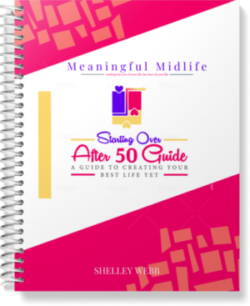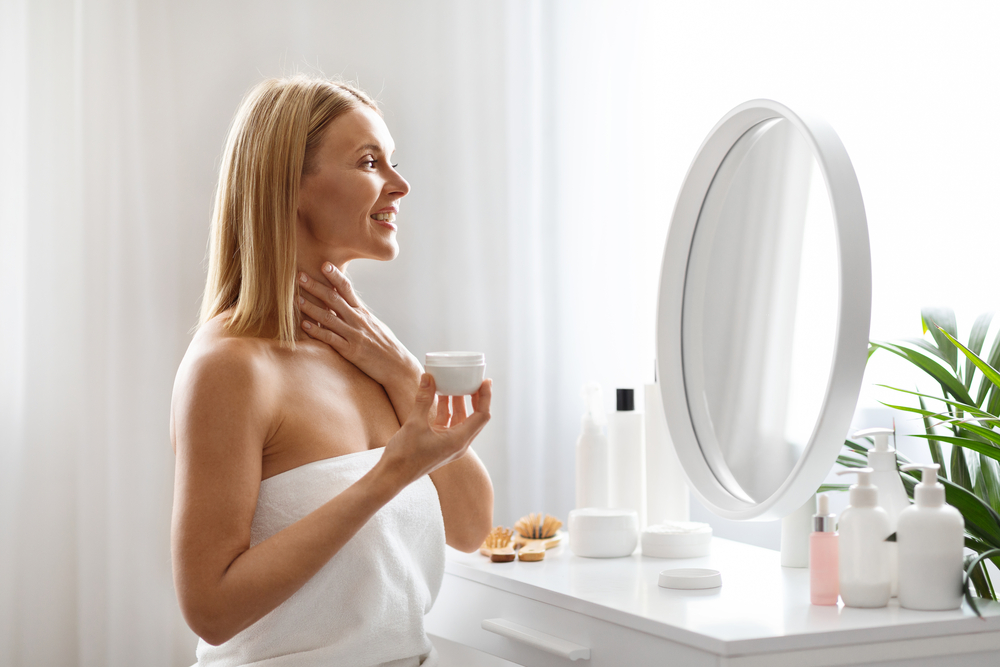First an admission. My skin is not good; it’s actually pathetic! I grew up in southern California and spent a lot of time on the beach. I never wore sunscreen back then and in fact, we used to apply baby oil and Coppertone to our skin in large quantities, despite my mother’s warning. I think there was a saying back then: you can never be too rich or too tan.
For a long time, I thought it was pointless to even try to do anything about my skin, but for the past few years, I’ve been trying to make a better effort. I just recently began using skin cycling as a nightly regimen after I read an article in Cosmopolitan Magazine. Skin cycling is said to have been developed by Dr. Whitney Bowe, a dermatologist in New York (she was actually mentioned in that little article). It’s a very buzzy term on TikTok too so if you’ve even glanced at the app lately, you have probably seen it. Last time I checked the hashtag #skincycling had received over 3.5 billion views!
I think one of the reasons it has become so popular is that women were confused by the number of products to choose from and how to use them. I wrote about layering skin care products in the post How to Layer Your Serums, Moisturizers and Other Skincare Products.
And of course, many of us take a more-is-better approach, which is rarely good.
What is Skin Cycling?
Skin cycling is a nightly skincare cyclical regimen that involves using active ingredients on certain nights, and following them with “rest” days. The idea is that this can help prevent the skin barrier from being compromised due to the overuse of active ingredients because that leads to skin irritation and redness.
There have been a few different ways to do skin cycling mentioned, but I’m following Dr. Bowe’s method which is to use a four-day cycle. On day one, you would use an exfoliator to remove dead skin cells. On day two, you would use a retinoid to promote cell turnover. On days three and four, you would use a moisturizer to hydrate and protect your skin.
You can also adjust the skin cycling routine to fit your individual needs. For example, if you have sensitive skin, you may want to use a gentler exfoliator or retinoid. And if you have oily skin, you may want to use a more hydrating moisturizer.
Benefits of Skin Cycling
There are many benefits to skin cycling, including:
- Improved skin texture
- Improved skin barrier function
- Reduced fine lines and wrinkles
- Brighter, more radiant skin
- Reduced acne breakouts
- Reduced skin irritation
How to Do Skin Cycling
Here are the four steps to skin cycling:
*These are done at night and all of the steps begin by cleansing the skin.
Night 1 – Exfoliate
Exfoliating is the first step in skin cycling. Exfoliating helps to remove dead skin cells and reveal fresh, new skin underneath. There are two types of exfoliators: physical and chemical. Dr, Bowe recommends a chemical exfoliating leave-on serum. Avoid the harsh physical scrubs. The acids are actually more effective and gentler for the skin barrier. PCA Skin Resurfacing Serum is one to consider. A less expensive option is The Ordinary Peeling Solution at Sephora. You can also find it on Amazon.
Once you put on the serum exfoliator, let it dry completely and then apply your moisturizer. Dr. Bowe says that it’s okay if the exfoliating serum tingles a little, but if it burns, remove it immediately. Dr. Bowe recommends her own moisturizer “Bowe Glow”, but you can use your favorite. One of the things that I do like about her products is that she has refills. Remember to apply to face, neck and chest.
Night 2 – Use a Retinoid
Retinoids are a type of vitamin A that can help to improve skin texture, reduce fine lines and wrinkles, and clear up acne. Retinoids can be very effective, but they can also be irritating. First, cleanse, and then pat the skin dry after cleansing because if you don’t, the retinoids could cause irritation. Apply the retinoid to your face, neck and chest area. If you are new to retinoids, you should start by using a low-strength retinoid and gradually increase the strength over time as needed. Remember that less is more! Also, if you’re first starting out, use a bit of your moisturizer under your eyes, in the marionette area (the corners of nose and mouth) and neck. If your skin feels a bit dry, put a bit of moisturizer on top!
Murad Retinol Youth Renewal Night Cream is one that I’ve tried.
Olay Regenerist retinol 24 Max Night Serum is your less expensive option. I haven’t tried this one because I’m allergic to something in Olay products.
Nights 3 & 4 – Recovery Nights
On recovery nights, the goal is to focus on nourishing your skin microbiome and repairing your skin barrier so think hydration and moisturizing. First, cleanse your skin but this time, leave the skin a bit damp. Put on a hydrating serum that contains hyaluronic acid, glycerin, and niacinamide.
Moisturizing is an important step in any skincare routine, but it is especially important if you are using active ingredients like retinoids. Retinoids can dry out your skin, so it is important to then apply a moisturizer that will hydrate and protect your skin barrier.
La Mer Creme de la Mer is lovely but rather expensive. I just use CeraVe Skin Renewing Night Moisturizing Cream. In between those two price points, you can find SkinCeuticals’s Triple Lipid Restore + Repair Cream
If your skin still feels a little dry, you can use an oil like rose hip oil, or squalene oil (a slippery liquid that occurs naturally in plants, and animals). Again, remember to apply to the face, neck and chest.
So the 4-night routine is Exfoliate, Retinoid, Recovery, Recovery. Then repeat the cycle.
If you need to, you can take a break from active ingredients for one day, one week, or even one month. It is up to you to decide how often you need to take a break.
Tips for Skin Cycling
Here are a few tips for skin cycling:
- Start slowly. If you are new to skin cycling, start by using active ingredients that are less intensive.
- Listen to your skin. If your skin is feeling irritated or dry, or breaking out, take a break from using active ingredients. Many people mistake that as “skin purging”, but it probably isn’t.
- Use sunscreen during the day. Retinoids can make your skin more sensitive to the sun, so it is important to use sunscreen every day, even on cloudy days.
- Talk to your dermatologist. If you have any questions about skin cycling, talk to your dermatologist. They can help you create a skin cycling routine that is right for you.
Conclusion
Skin cycling is a great way to improve the overall health and appearance of your skin. By using active ingredients in moderation, you can help to keep your skin looking its best.
LEARN TO LOVE YOUR LIFE AGAIN
 Do you feel like you need to hit the REFRESH button on your life? Download our free guide and begin to create your best life yet!
Do you feel like you need to hit the REFRESH button on your life? Download our free guide and begin to create your best life yet!




Excellent blog! This was very helpful. I am going to give skin cycling a try. I also like your recommendations on skin care brands. It’s nice to not have to spend a fortune for a good moisturizer.
Thanks, Nancy! I thought it was an interesting concept and so many on Tik Tok are talking about it.